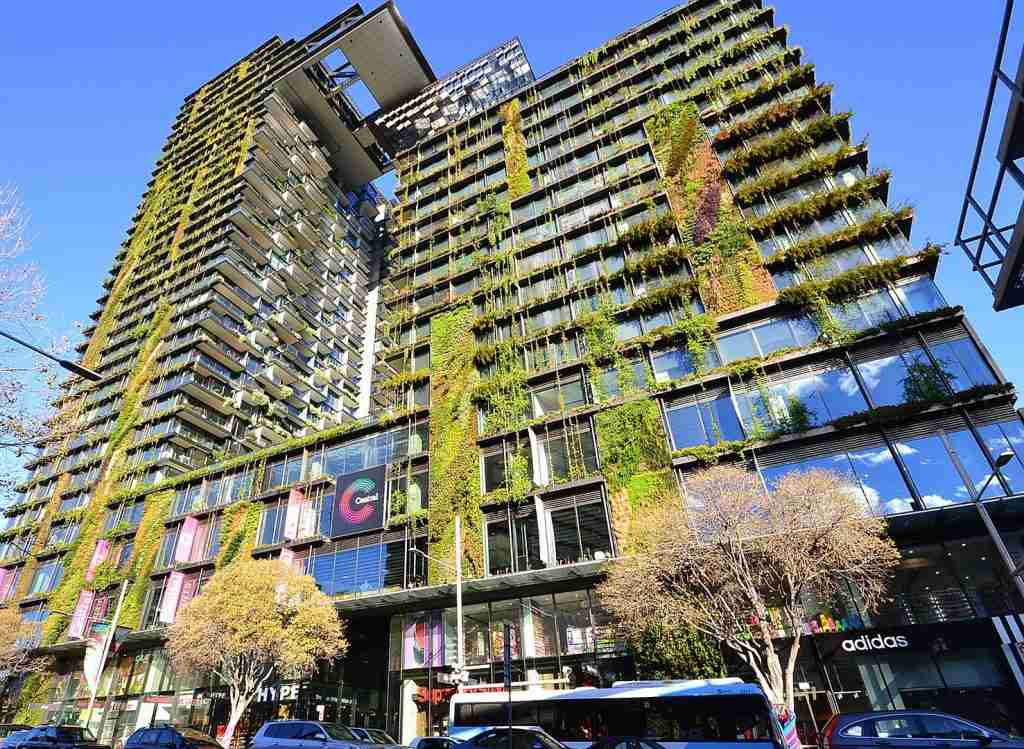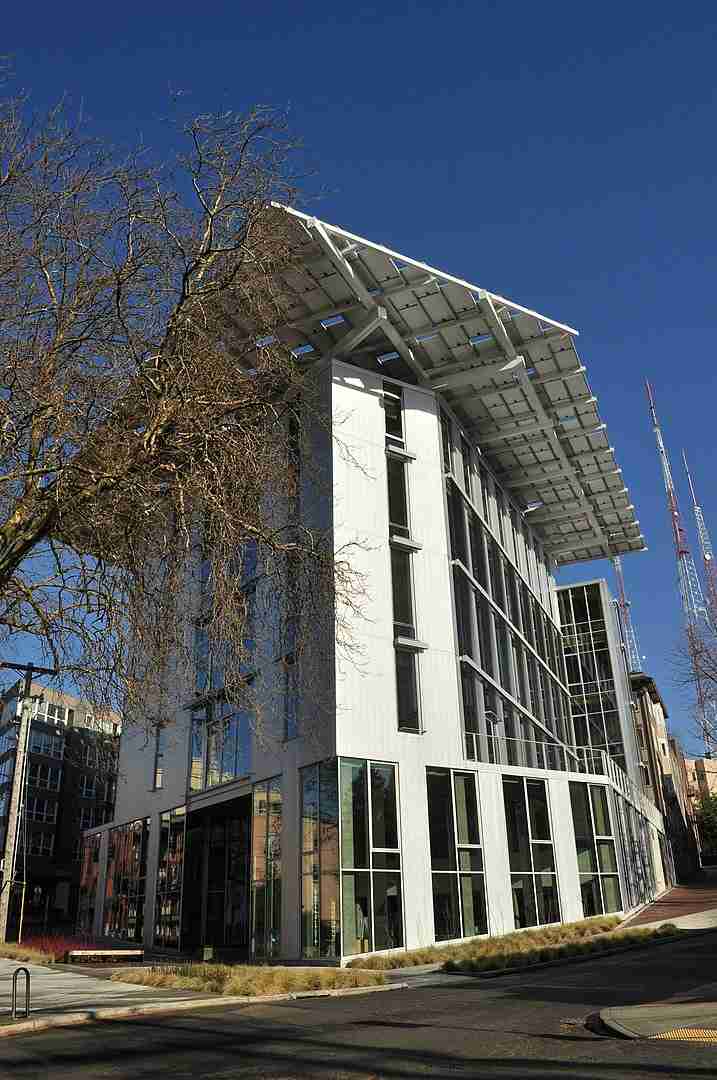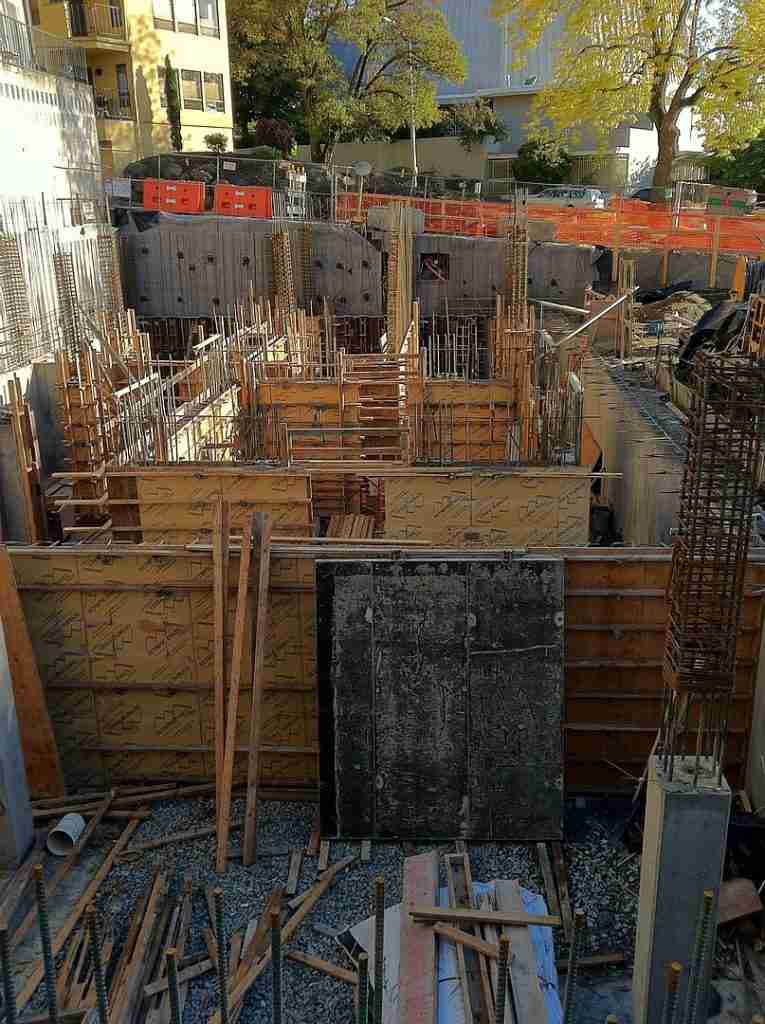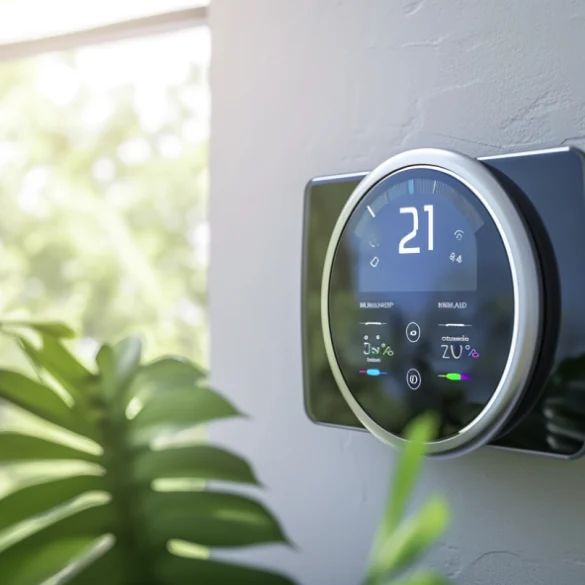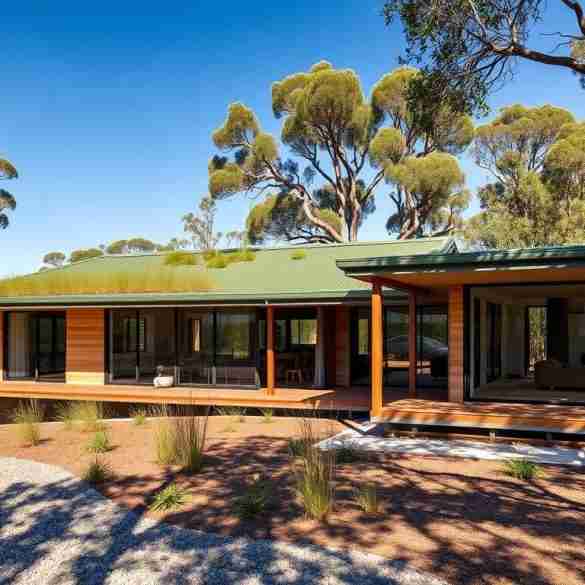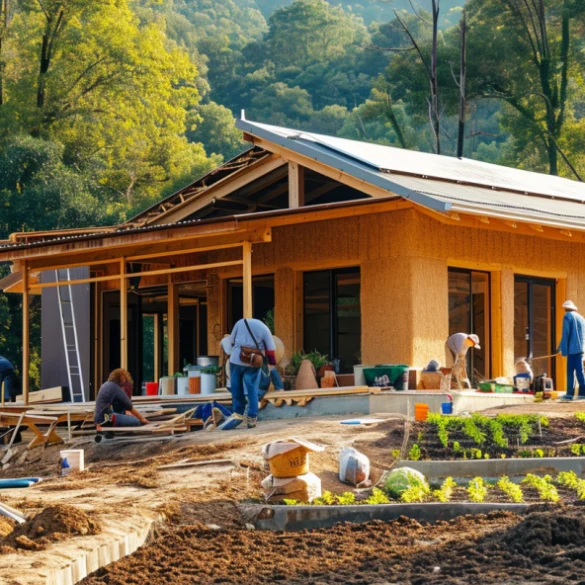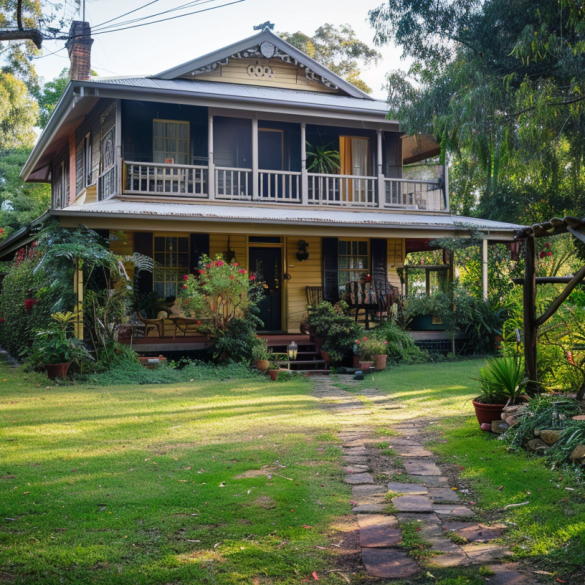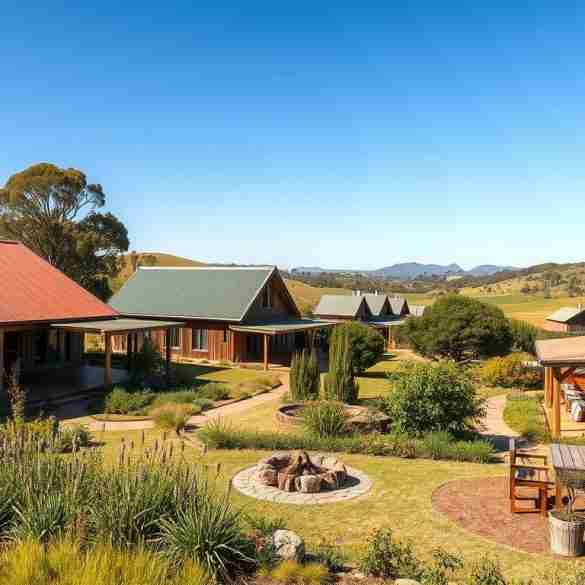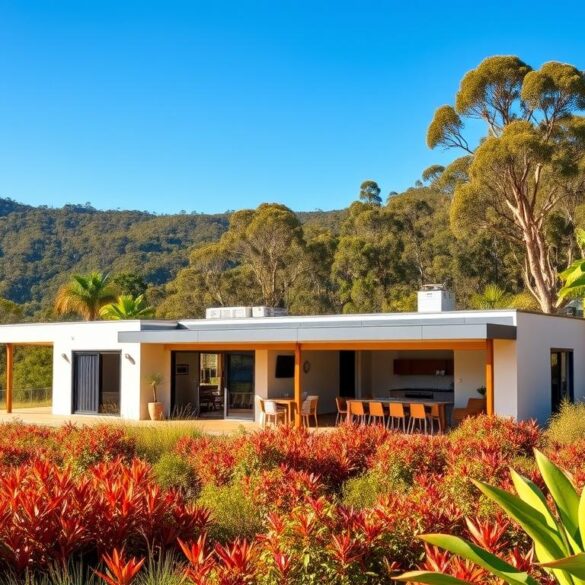Did you know a single building in Seattle powers 41 homes for a year? Bullitt Center Seattle is a green building that changed the game1. It’s a six-story office that shows what’s possible in an eco-friendly building.
The Bullitt Foundation and Point32 built it for $32.5 million. It meets the Living Building Challenge (LBC) standards. It’s a living example of sustainability.
The rooftop has a 242 kW photovoltaic array. It made 30% more energy than the building used in its first decade21. This is amazing, especially in Seattle’s cloudy weather.
The Bullitt Center does more than just make energy. It has a 56,000-gallon cistern for rainwater and composting toilets. It also has a green roof and uses FSC-certified wood and non-toxic materials2. These features make it a leader in sustainable building.
The center is very efficient. It uses only 9.4 kBTU/sf annually, much less than Seattle’s average1. It uses natural light a lot, cutting down electric lighting by 67%2.
Exploring the Bullitt Center’s materials and systems shows its impact. It’s changing green construction and leading to a sustainable future.
Table of Contents
Key Takeaways for Bullitt Center Seattle
- The Bullitt Center generates 30% more energy than it uses
- It features a 242 kW photovoltaic array on its roof
- The building uses rainwater harvesting with a 56,000-gallon cistern
- It achieved Living Building Challenge certification in 2015
- The center’s EUI is 87% lower than the average Seattle office building
- Natural lighting reduces electric lighting power consumption by 67%
- The building is designed with a 250-year projected lifespan
Overview of Green Materials Used in The Bullitt Center
The Bullitt Center in Seattle is a top example of a green building. It uses new materials and designs to lead in sustainable architecture.
Key Sustainable Materials in The Bullitt Center
The center uses heavy timber for its structure. This choice is good for the planet and easy to find locally. The building also has a special wall system and well-insulated walls.
These features make the building very energy-efficient. It uses 9.4 kBTU/sf year, beating expectations by a lot. It’s 77% better than buildings in 20093.
Locally Sourced and Sustainable Materials
The Bullitt Center focuses on local materials to cut down on emissions. It’s the only building in the U.S. using 100% Forest Stewardship Council-certified wood. This shows its dedication to green forestry4.
The building also has 575 solar panels. In 2014, they made 3,671 kilowatt-hours of energy. This shows its commitment to renewable energy4.
The Lifecycle of Materials Used in The Bullitt Center
The center is designed to last 250 years. It has over 44,700 square feet of office space. This is much longer than usual for commercial buildings45.
The project also avoided 362 toxic chemicals. This shows it meets high environmental standards4.
Material Selection Criteria for a Green Building
The Bullitt Center chose materials based on the Living Building Challenge. It aims for net-zero energy, water, and waste. It also avoids harmful chemicals from the LBC Red List5.
Every part of the building, from finishes to toilets, helps it be green. This makes sure it meets its sustainability goals.
How The Bullitt Center Uses Recycled and Reclaimed Materials
The Bullitt Center in Seattle is a top example of a green building. It shows how recycled materials and reclaimed wood can make buildings better for the planet.
Specific Recycled Materials in The Bullitt Center
The Bullitt Center uses recycled materials to cut down on harm to the environment. It has FSC-certified timber, which is important for the planet6. It also uses recycled glass, helping the economy and reducing waste in building7.
Benefits of Using Reclaimed Wood and Other Materials
Reclaimed wood is key to the Bullitt Center’s green design. It cuts down on waste and makes the building look good. It’s used for floors, furniture, and more, adding beauty and helping the environment8.
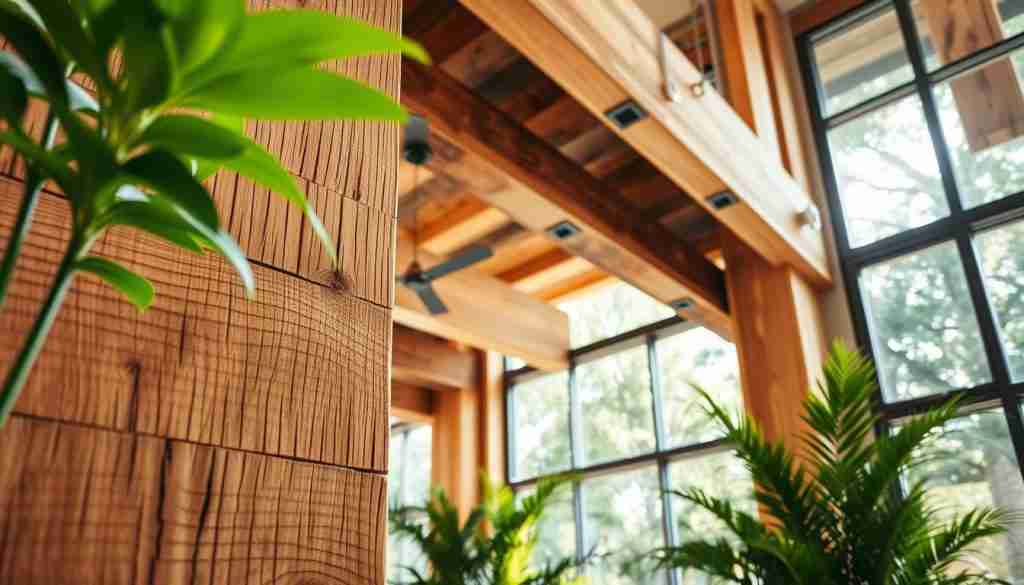
The Role of Salvaged Materials in Achieving Sustainability
Salvaged materials are vital for the Bullitt Center’s green goals. They help lower the building’s carbon footprint. For example, almost all structural steel can be recycled, saving energy and cutting down on emissions7.
Reducing Waste Through the Use of Recycled Materials
The Bullitt Center is all about cutting down on waste. Using recycled materials saves resources and is cheaper in the long run. Even though some green products cost more at first, they save money and energy later8.
| Material | Environmental Benefit | Lifespan |
|---|---|---|
| FSC-certified Timber | Responsible harvesting | 40+ years |
| Recycled Glass | Waste reduction | Indefinite |
| Reclaimed Wood | Resource conservation | Varies |
| Recycled Steel | Energy savings | 50+ years |
The Bullitt Center’s use of recycled and reclaimed materials is a new standard for green building. It shows that being eco-friendly can also be practical and beautiful.
The Use of Non-Toxic Materials in The Bullitt Center
The Bullitt Center is a leader in toxin-free interiors in Seattle’s Capitol Hill. It’s a six-story, 50,000-square-foot building. It shows how healthy materials make a safe work place9.
VOC-Free Paints and Coatings
The Bullitt Center uses VOC-free finishes. It has water-based sealers for wood and anodized aluminum. These choices help keep the air clean and healthy.
Non-Toxic Insulation Materials
The insulation in the Bullitt Center doesn’t have harmful chemicals. This makes the building healthy and energy-efficient. It’s designed to last 250 years, using native FSC-certified Douglas Fir9.
Green Seal-Certified Building Materials
Green Seal materials are key in the Bullitt Center. It has Forest Stewardship Council “project certification”. All wood in the building is FSC-certified9. The furniture also meets strict standards.
The Impact of Non-Toxic Materials on Occupant Health
The Bullitt Center’s focus on non-toxic materials boosts health. It offers views, open windows, and stairs for walking9. Its energy use is better than expected, showing its green design works well10.
“The Bullitt Center aims to provide a safe, humane, and beautiful setting for work, supporting employee engagement, performance, and community well-being.”
By choosing healthy building materials, the Bullitt Center sets a new standard. It shows sustainability and health can work together. This sets the stage for more green buildings.
| Feature | Benefit |
|---|---|
| VOC-free finishes | Improved indoor air quality |
| Non-toxic insulation | Healthier living environment |
| FSC-certified wood | Sustainable construction |
| Green Seal-certified materials | Reduced environmental impact |
Renewable and Natural Materials in The Bullitt Center
The Bullitt Center is a symbol of green building. It shows how natural materials can make buildings good for the planet. This six-story building in Seattle is a great example of using eco-friendly materials well.
The Role of FSC-Certified Wood
FSC-certified wood is key to the Bullitt Center. It comes from the Pacific Northwest and makes the building strong and beautiful. It also helps take carbon dioxide out of the air. The building got a top award for using only FSC-certified wood11.
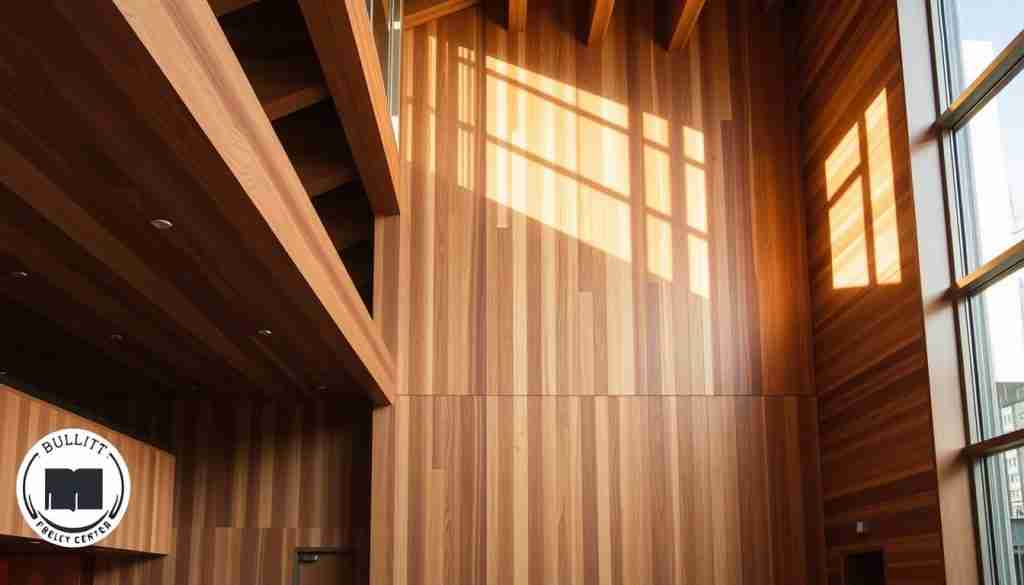
Rapidly Renewable Materials
The Bullitt Center uses materials that grow back fast. These materials help the building be more green. They make the construction process better for the environment.
Natural Insulation Materials
Natural insulation is important for the Bullitt Center’s energy use. It has special walls and windows that keep it cozy and save energy. This makes the building very efficient, even better than most in Seattle11.
Biodegradable and Compostable Building Materials
The Bullitt Center also uses materials that can break down. For example, it has composting toilets. These toilets use much less water than regular ones12. This helps the building be kinder to the planet.
By choosing natural materials, the Bullitt Center shows us how to build green. It’s a great example of building projects around the world. It shows we can build places that are good for the planet and nice to be in.
Energy-Efficient Materials and Technologies
The Bullitt Center in Seattle is a leader in green building. It opened in 2013 and is one of the greenest buildings worldwide13. It uses advanced materials and design to save energy.
High-Performance Glass and Windows
The Center has triple-glazed windows that meet high standards14. These windows work with shades to control temperature and light13. This system cuts energy use and lets in natural light.
Advanced Insulation Materials
The building’s insulation is key to its energy savings. It uses concrete, steel, and timber from the Northwest13. These materials keep the building warm in winter and cool in summer.
Reflective Roofing and Heat-Resistant Materials
The building’s roof is covered in 14,000 square feet of solar panels13. These panels make a lot of energy, sometimes more than the building needs. This energy is sold to Seattle City Light.
Energy-Saving Technologies Incorporated in Material Design
The Bullitt Center uses many energy-saving technologies. It has a geothermal system for heating and cooling14. It also uses water loops for heating and cooling in offices14.
The building limits electric lighting and office equipment to save energy14.
The Bullitt Center is a model for sustainable home passive design. It has inspired projects like Rainier Beach High School to go green13. It shows that green buildings can be both useful and inspiring.
| Feature | Specification | Benefit |
|---|---|---|
| Windows | Triple-glazed | Superior insulation |
| Solar Array | 575 panels, 14,000 sq ft | 244,000 kWh/year |
| Lighting Load | 0.4 W/sq ft | Energy conservation |
| Heating/Cooling | Geothermal system | Efficient temperature control |
How The Bullitt Center Achieved Living Building Certification
The Bullitt Center in Seattle is a top example of green architecture. It’s a 52,000 square-foot, six-story building. It became the first office to get Living Building certification on April 1, 201515.
Material Transparency Requirements for Certification
To get Living Building Challenge certification, you need to be very open about materials. The Bullitt Center didn’t use 362 “Red List” elements. This means all materials were safe and didn’t harm people or the environment15.
Red List-Free Materials Used in Construction
The Bullitt Center is all about being green. It used Forest Stewardship Council-certified wood. This made it the first U.S. office to do so1615.
This choice helps keep the building and the area around it healthy.
Meeting Stringent Sustainability Standards
The Bullitt Center goes beyond what most green buildings do. It makes 60% more energy from solar panels than it uses1615. In 2014, it was the most energy-efficient office in America15.
It even has systems to compost waste and use rainwater for everything, including drinking16.
Comparing LEED and Living Building Challenge Requirements
LEED certification is good, but the Living Building Challenge is even better. The Bullitt Center shows it’s possible to build truly sustainable buildings. Its success has inspired projects from 12 countries to aim for Living Building Challenge certification16.
The McGilvra Place Park next to it is the first “Living Park” to meet the Challenge’s Landscape Typology requirements16.
The Bullitt Center’s path to Living Building certification shows the highest green building standards. It’s a model for future sustainable buildings. It hosts about six tours a week for people wanting to learn from its design15.
The Bullitt Center’s Water-Saving Materials and Systems
The Bullitt Center in Seattle is a leader in green design. It focuses on water management. This six-story, 50,000 square foot office building uses systems for net-zero water17.
Use of Water-Permeable Surfaces and Materials
The building uses water-permeable materials. These surfaces let rainwater through. This cuts down on runoff and helps groundwater.
Rainwater Harvesting Systems Supported by Green Materials
The Bullitt Center’s rainwater system is key. It collects and filters rainwater in a 56,000-gallon cistern17. This system is the biggest of its kind, serving 175 people18.
Greywater Systems Using Eco-Friendly Materials
The Bullitt Center also has greywater systems. These systems clean and reuse water from sinks and showers. The treated water is used for other needs, cutting down the building’s water use.
Eco-Friendly Plumbing and Fixtures
The building’s plumbing is very green. It has composting toilets that handle waste well17. These toilets save a lot of water, using 93.8% less than usual18.
| Feature | Benefit |
|---|---|
| Rainwater Harvesting | Provides potable water |
| Greywater Treatment | Recycles water for non-potable use |
| Composting Toilets | Reduces water waste |
| Water-Permeable Surfaces | Reduces runoff, replenishes groundwater |
The Bullitt Center shows it’s possible to manage water well in cities. It sets an example for buildings to aim for net-zero water in the future.
The Bullitt Center’s Wood-Based Structure and Its Sustainability
The Bullitt Center in Seattle is a top example of green wood buildings. It’s a six-story, 50,000-square-foot building. It shows how wood can make spaces better for the planet9.
Benefits of Using Wood Over Steel or Concrete
Wood has many benefits for green buildings. The Bullitt Center’s wood will last 250 years. This is much longer than most buildings, saving resources9.
Structural Advantages of Timber in Sustainable Buildings
The Bullitt Center’s wood makes it very green. It uses much less energy than other buildings. This is because wood is good at keeping warm or cool2.
Wood Preservation and Durability Techniques
The Bullitt Center uses special ways to keep wood strong. All the wood in the building is from forests that are well-managed. This means the wood is of high quality and good for the planet9.
Carbon Sequestration Benefits of Timber Structures
Wood in the Bullitt Center helps the environment. It stores carbon, which is good for the planet. The building also has solar panels on the roof. These panels make even more energy10.
By using wood, the Bullitt Center shows us how to build green. These buildings are strong, last a long time, and help the environment.
The Role of Glass in the Bullitt Center’s Green Design
The Bullitt Center smartly uses glass. It lets in natural light and saves energy. This building is six stories tall and has big windows that open. They let in lots of light19.
Energy-Efficient Glazing Systems
The Bullitt Center’s glazing system is key to its green design. It has a heavy, triple-pane glass wall. This wall keeps the building warm in winter and cool in summer19.
These energy-efficient glazing systems help the building use no energy at all. It’s a big goal for the Center.
Solar Gain Reduction and Daylighting Strategies
The Bullitt Center’s windows are designed to let in the right amount of light. They use computer simulations to get it just right19. This design helps the building use less artificial light.
In 2016, the Center made 28 percent more energy than it used. This is thanks to its solar panels20.
Photovoltaic-Integrated Glass and Energy Production
The Bullitt Center’s roof has 570 solar panels. Each panel is 425 watts strong. Together, they make 242 kilowatts of power2120.
These panels are very good at making energy, even on cloudy days. They use 20% of the sunlight to make electricity20. This shows the Center’s dedication to making energy in a green way.
